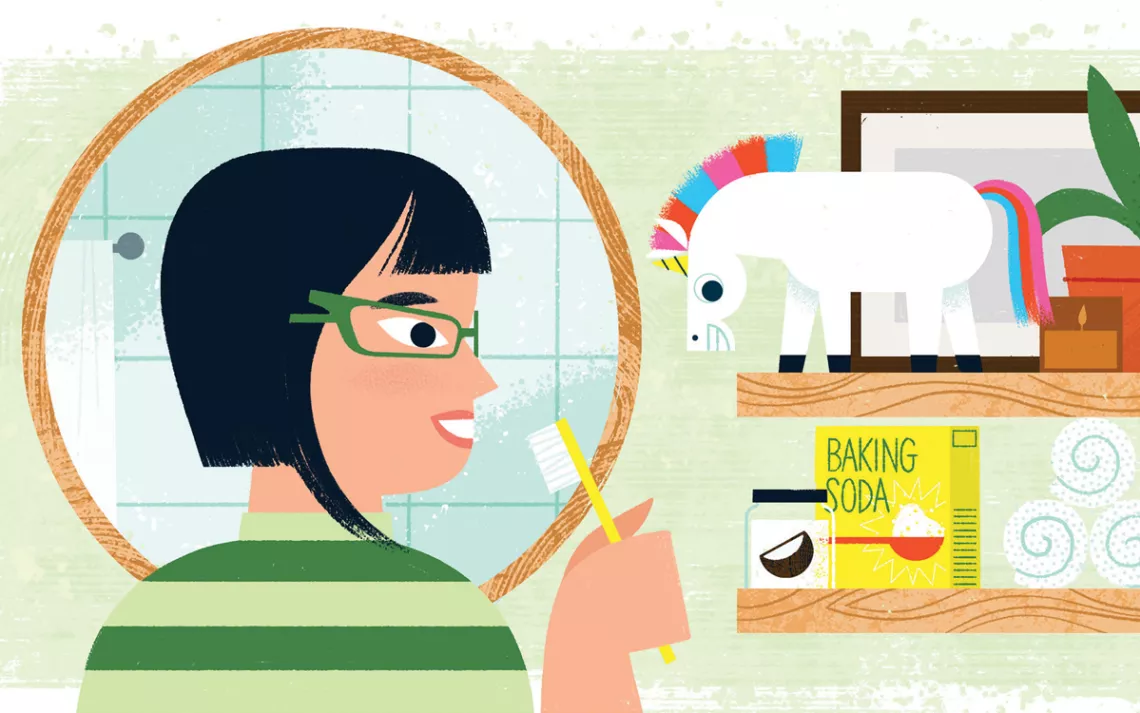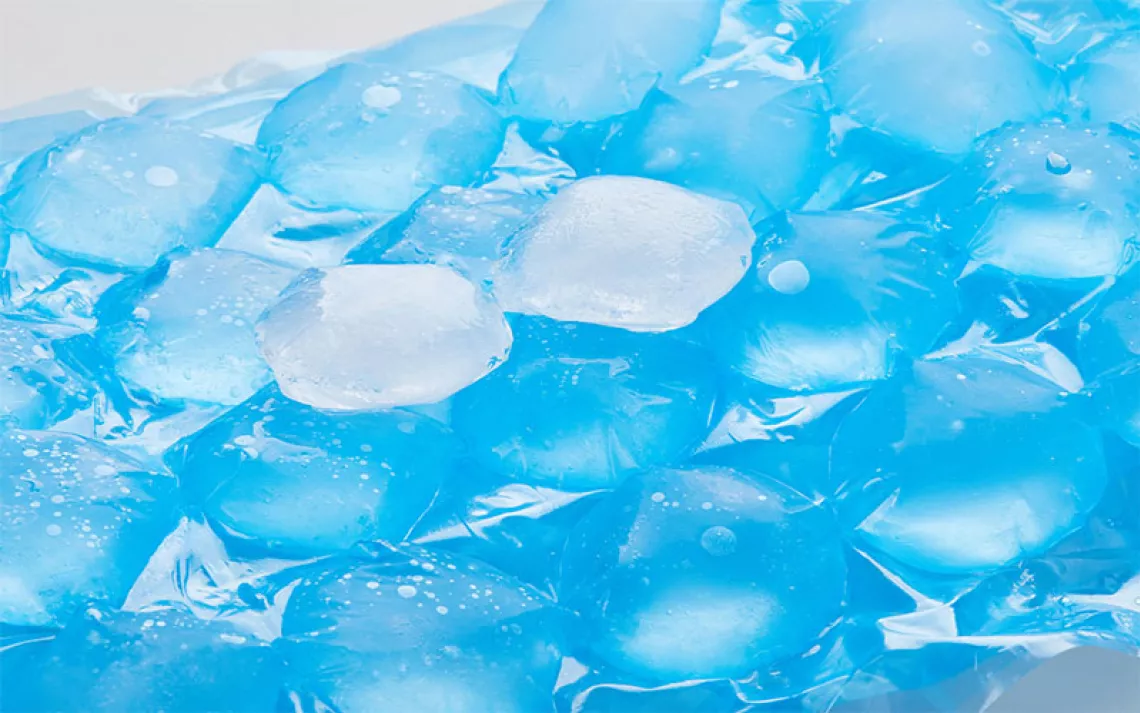Is There an Eco Way to Brush My Teeth?
Even "natural" toothpastes can have potentially toxic ingredients

Illustration by Loris Lora
Hey Ms. Green,
Does using toothpaste have any negative consequences? I noticed that my Crest Tartar Protection lists only the active ingredient, sodium fluoride, and no others, so I'm wondering what we are spitting into our wastewater every day.
—Martin in San Leandro, California
Yes. According to the Environmental Working Group, even "natural" toothpastes have ingredients that can be toxic to humans, animals, or the environment, including titanium dioxide, limonene, and sodium lauryl sulfate. One study found that SLS can give you canker sores. Also, SLS and glycerin, another common toothpaste ingredient, may be derived from palm oil and can appear under multiple names on labels. Your toothpaste might contain palm oil in other forms—over 1,000 ingredients are derived from it. I boycott palm oil because even "sustainable" palm-oil plantations have been caught clearcutting rainforests and using child and forced labor.
Meanwhile, the tubes themselves are a problem: Curbside programs don't recycle toothpaste tubes and small plastics.
But there's hope! Just make your own toothpaste. Try mixing coconut oil and a little baking soda. Studies suggest that toothpaste with baking soda might be more effective at reducing plaque than traditional toothpaste. I use the same recipe to make deodorant. Just be sure you don't use too much baking soda (it's abrasive).
If you're looking for a cheap, organic option, try Juturna's Remineralizing Toothpaste. Return the glass jar it comes in; Juturna will sterilize it, refill it, and mail it back to you. Or try Hammond Herb's Tiger Tooth Powder, which also comes in a refillable glass jar.
Editor's Note: In our March/April issue, Ms. Green closed her column on toothpaste by writing that she didn't have room to touch on fluoride and wouldn't touch it "with a 10-foot toothbrush." Some readers interpreted that to mean she was suggesting she wouldn't touch fluoride itself, i.e., that she thinks fluoride is toxic. She does not have that position, nor was she intending to suggest that she does. Her intent was to make clear she didn't have the room to, nor did she want to, weigh in on the subject. We regret the misunderstanding.
 The Magazine of The Sierra Club
The Magazine of The Sierra Club



